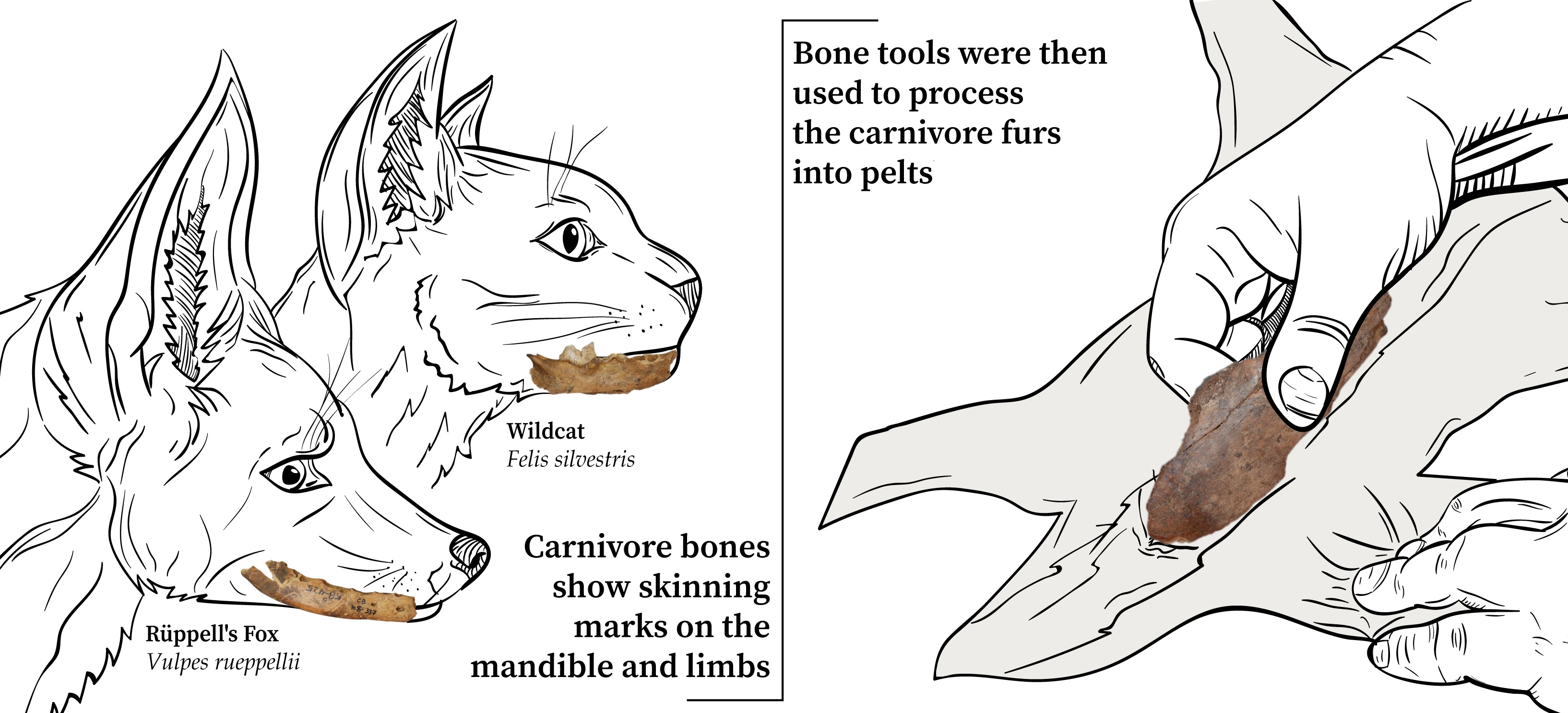
The researchers came across the bone tools unexpectedly. They were looking for animal bones in order to recreate the human diet. But they found:
A new study led by Arizona State University paleoanthropologist Curtis Marean and ASU doctoral graduate Emily Hallett details more than 60 tools made of bone and one tool made from the tooth of a cetacean, which includes whales, dolphins and porpoises. These finds, first unearthed from Contrebandiers Cave, Morocco, in 2011, are highly suggestive proxy evidence for the earliest clothing in the archaeological record and attest to the pan-African emergence of complex culture and specialized tool manufacture…
“This was a critical time period and location for the early members of our species,” said Hallett, “and I was primarily interested in reconstructing the diet and habitat niche of the people who used this cave.”
Among the roughly 12,000 bone fragments, Hallett found more than 60 animal bones that had been shaped by humans for use as tools. At the same time, Hallett identified a pattern of cut marks on the carnivore bones suggesting that, rather than processing them for meat, the occupants of Contrebandiers Cave were skinning them for fur.
ASU News, “Study suggests earliest use of bone tools to produce clothing in Morocco 120,000 years ago” at Arizona State University (September 16, 2021)
Clothing isn’t just for warmth. It is usually evidence of symbolic thought as well. People use it to express ideas.
The paper is open access.
But the bone tools tell only half of the story. Hallett also noticed that a lot of carnivore bones piled in the cave still bore the telltale marks of being cut by humans.
The remains of sand foxes, golden jackals and wildcats clearly showed marks like those still created in skinning techniques. Incisions were made to detach the skin at each of the animal’s four paws, so that the skin could be pulled in one piece to the animal’s head. Skin at the head was then removed by cutting around the lips, which is also evidenced by ancient cut marks. These carnivore species show no marks of butchery that would suggest they were eaten, only the cuts necessary to remove skin. On the other hand, the remains of other animals including bovids akin to ancient cows, show clear signs that they were processed to produce meat for the Pleistocene dinner table.
Brian Handwerk, “Evidence of Fur and Leather Clothing, Among World’s Oldest, Found in Moroccan Cave” at Smithsonian Magazine (September 16, 2021)